Montreal: Real dancers, and some virtual dance - Vancouver Ballet Society
- Home
- City Reports 2020 - 2023
- Montreal: Real dancers, and some virtual dance

By Victor Swoboda
Agora de la danse gave Montreal a glimpse of dance’s fast-approaching future with Koros, a mixed bill featuring three group works presented in virtual reality: Allegro Barbaro by Hélène Blackburn, The Complex Simplicity of Love by Margie Gillis, and 6.58 Manifesto by Andrea Peña (who is showing at the Venice Biennale in July). Wearing 3D glasses, the audience of ten seated in a circle watched projected images whose depth and definition were eerily real. The choreographies were designed in the round, so that by swivelling in chairs, each viewer had a unique experience of the works. Gillis’ offering still largely resembled a proscenium piece, whereas Blackburn and Peña fully exploited the all-around concept. The technology provided an intimate closeness with dancers who sometimes approached to within arm’s length. I left intrigued about virtual reality’s creative possibilities.
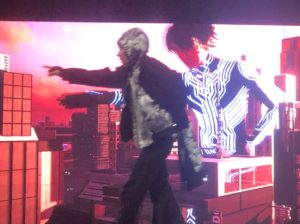
Technology was also prominent in Lu Yang: Delusional World, a collaboration between Shanghai-born techno-artist Lu Yang and Montreal’s Louise Lecavalier at Arsenal Contemporary Art. Through motion-capture technology, an ogre-like avatar mirrored Lecavalier’s movements on a huge video screen. Characteristically high-energy and fast-paced, Lecavalier’s syncopated arms and legs flashed like visual jazz. Later, in another mode, she strode powerfully, sawing the air as a superwoman avatar flew across a cityscape amid exploding buildings. The video was colourful and vibrant, but my eye consistently focussed on the live performer, a tribute to Lecavalier’s charisma.
In the Cinquième Salle of Place des Arts in March, as part of the Danse Danse series, Tentacle Tribe’s Prism by Elon Höglund and Emmanuelle Lê Phan featured visually sensational dance without technology. Using several large movable mirrors and adroitly placed lighting, Prism was the company’s most complex work to date. In it, five dancers in brightly coloured outfits repeatedly emerged from a deep gloom to gesticulate in front of the mirrors, which reflected their intertwining bodies. Often it was not possible to discern whose limbs belonged to whom. In one sequence to a repeated percussive rhythm, the group formed a line one behind the other between two mirrors, fluttering their limbs like a centipede. Just as different colours flowing through a prism become a single white light, Prism’s individuals merged into one, an idea expressed in a brief spoken text during the performance.
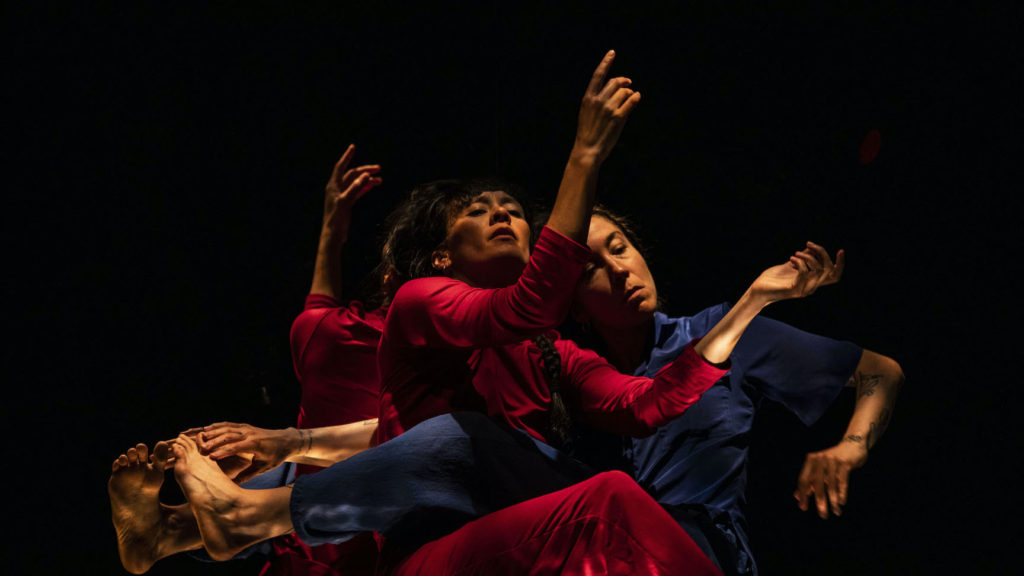
The following month at Place des Arts, this time in the larger Théâtre Maisonneuve, RUBBERBAND’s Reckless Underdog for 12 dancers abandoned much of the sophisticated urban-dance vocabulary that choreographer Victor Quijada has developed for the company over the years. By his own admission, he wanted individual sequences to display the influences that made his career — modern, contemporary, and classical, as well as urban dance. The opening had dancers prancing balletically about the wide stage in open formations unlike Quijada’s trademark tight groupings. It was a tepid start, however, the movements meekly following the musical beat and lacking bite. By contrast, in a contemporary male-female duet, a tense dialogue ensued, exciting in the rawness with which each dancer asserted their place in the couple. The 50-minute work ended in an urban-dance battle, hometown turf close to Quijada’s heart. Although Reckless Underdog lacked overall cohesion, it showed this mid-career choreographer bravely pushing beyond boundaries.
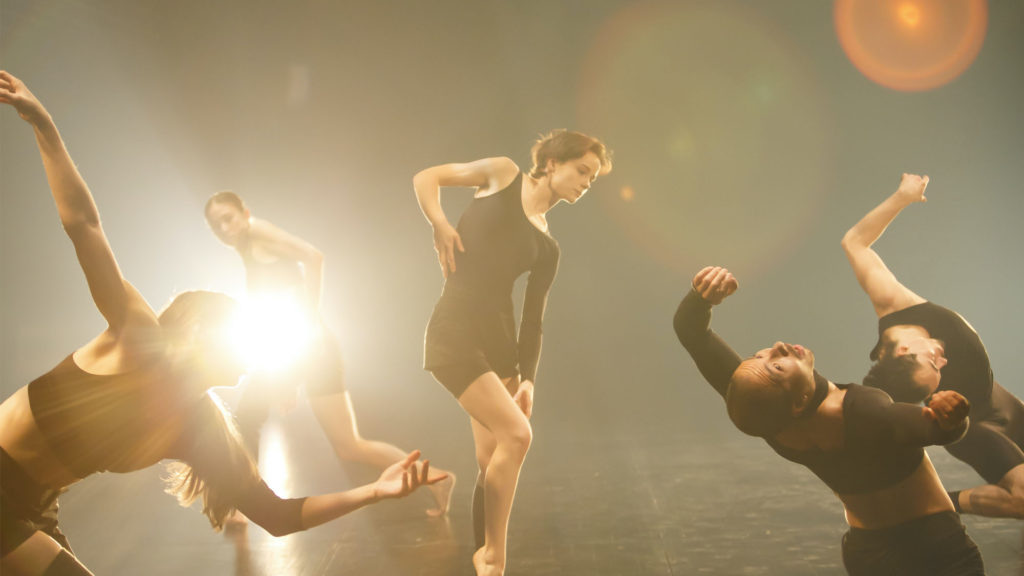
The 12 dancers in Marie Chouinard’s M, which premiered on January 31 in Théâtre Maisonneuve, were sometimes upstaged by colourful funnel, side, circle, and back lighting flowing across the large stage. The changing lights added verve to a creation glorifying sensuality, a Chouinard trademark. The opening had women and men decked out in flaming red wigs and harem pants, their torsos bare, revelling in their own attractiveness. Others entered individually, heavily inhaling and exhaling into a microphone and gesticulating until, with the lift of an arm, all motion ceased. In silhouette or front lit, the figures provided pretty photo ops, more decorative than meaningful. When dancers ran merrily in a circle, their laughter felt contrived. At least as colourful spectacle, M had its delights. Incidentally, social media giant Meta, owner of Facebook, censored the show’s bare-breasted publicity photos, forcing presenter Danse Danse to alter its marketing.

In a world premiere in March, Les Grands Ballets Canadiens performed Andrew Skeels’ Requiem in Salle Wilfrid-Pelletier to a live rendition of Brahms’ choral A German Requiem. A former dancer with Les Grands Ballets, Skeels choreographed Vessel for the company, to the choral music of Tchaikovsky, in 2019. He has also created works for other North American and European companies, as well as for his Skeels Danse Montréal.
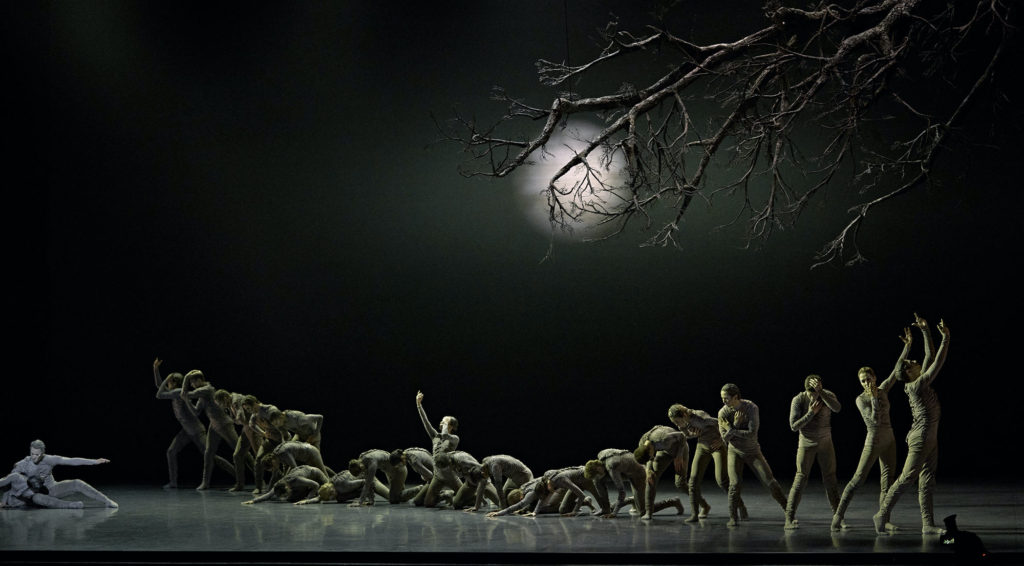
In Requiem, the dancers’ outfits recalled First World War uniforms, an impression strengthened by military-like formations moving across the stage. Bodies arched, heads bowed, and individuals hugged to show mourning, but this choreographic probing of grief could have dug deeper. To my mind, only toward the end, when a body was passed solemnly from pair to pair, did dance and music deeply coalesce.
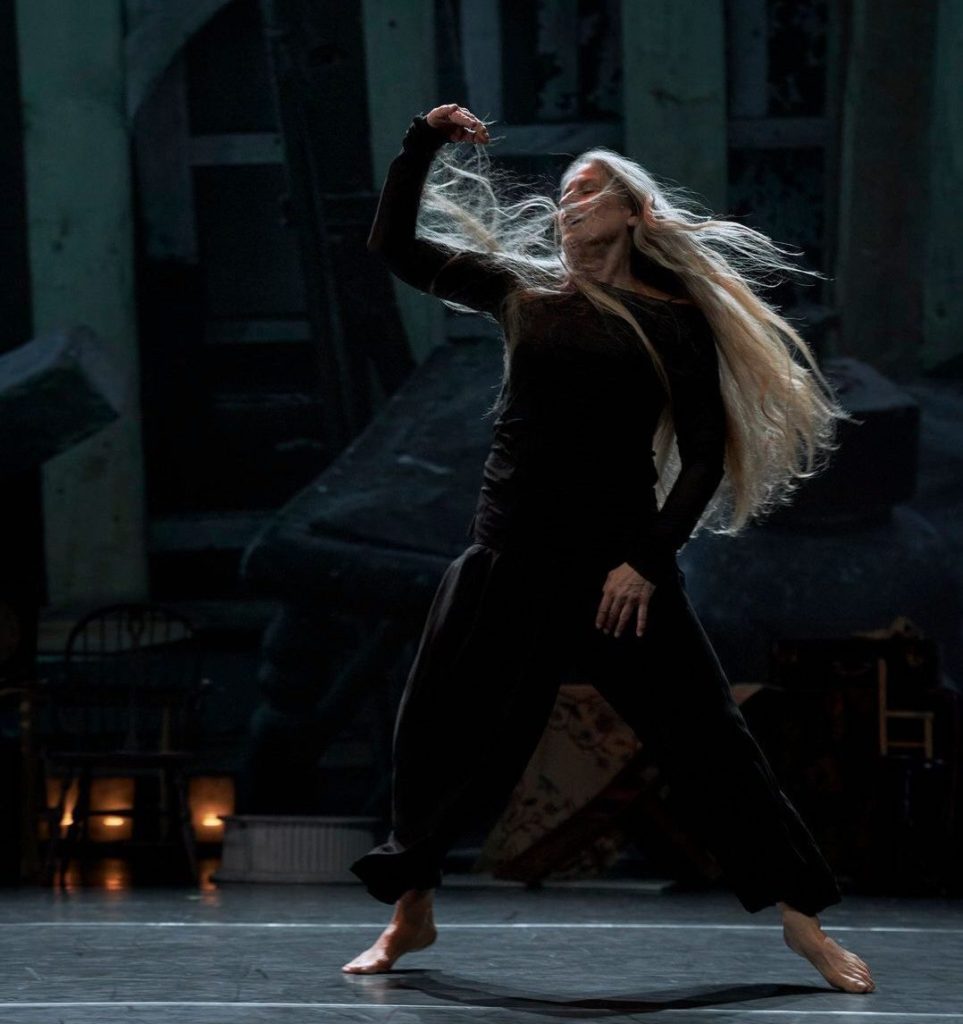
Finally, in what was announced as her last full-length solo appearance, 69-year-old Margie Gillis — an iconic Montreal soloist — premiered her Old at Agora de la danse in March. Moving amid a ramshackle set that included an old sofa, broken chairs, a large clock, and bronzed baby shoes, Gillis still showed fluid limbs and a childlike pleasure in movement. She handled objects wistfully, discovered old letters, and playfully twirled a chair before abruptly pushing it away. Was the chair linked to an unpleasant memory? Exiting momentarily amid flashing lightning, she returned in a long white dress. Striding forcefully, she intoned, “I am my mother’s savage daughter. I will not lower my voice.” This was an assertive Gillis, not the familiar flower child of the 1970s. Old finished with her walking off casually, a quiet end to a long life onstage. A shower of flower petals accompanied the standing ovation.

